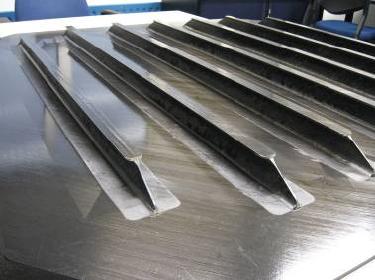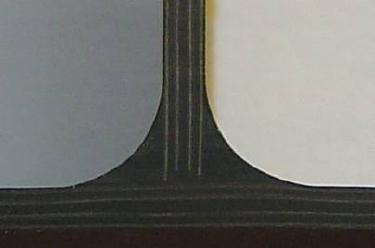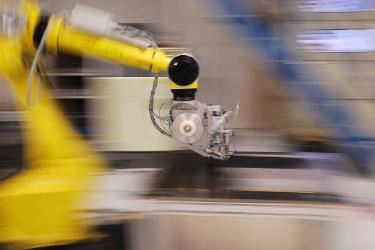Short term developments
New material
In TAPAS1 TAPAS2 projects new carbon fiber reinforced thermoplastic unidirectional tapes are developed. These tapes constitute the basis of the automatic placement processes that are being developed.
Welding
In contrast to conventional techniques like bonding and riveting, welding offers a lower cost method for connecting different components into an assembly. Examples are the wing fixed leading edge of the A380 and the rudders and elevators for the Gulfstream 650. In the TAPAS1 and TAPAs 2 projects, KVE is developing the induction welding technology for components made of large double curved structures made of high performance unidirectional tape.

Co-consolidation
Co-consolidation is the ultimate low cost manufacturing method for high performance thermoplastic components. It implies fusing together multiple preforms in a single melting step, thus creating integrated structures.

Co-consolidated skin panel with butt-joined T-stiffeners
A so-called butt-joint feature (Fokker patent pending) has been developed to simplify the stiffener-to-panel joint. A radius makes the joint strong and tough. Within the TAPAS1 and TAPAS2 projects, the butt-joint is further developed.

Cross-section of a butt-jointed stiffener on a skin
Automated fibre placement
In order to be able to manufacture larger skin panels and also to achieve high build rates, automated laying down of the thermoplastic UD-composite is necessary. Automated fibre placement is the technology of choice. For use in one of the full scale demonstrators, the automated layup of the skin panel and its stiffener preforms are being developed and performed by Fokker Aerostructures, NLR and Airborne Composites respectively. Fokker Aerostructures is developing a fiber placement layup process for large skin panels, using ultrasonics as the heat source and NLR using a laser as heat source. Airborne Composites develops a concept for continuous fibre placement, which is cost-efficient and suitable for high volume production.

Ultrasonic fiber placement of thermoplastics (photo Fokker Aerostructures)
Press-forming
Press-forming of advanced thermoplastic composite parts is a technology which is continuously being developed at DTC. This method of manufacturing combines high structural properties with a relatively low production cost. Within the TAPAS1 and TAPAS2 projects, the current production system will be scaled up to accommodate larger parts manufacturing. Besides this, research is conducted to ensure DTC can confidently process new generations of thermoplastic materials as they become available.
Structural health monitoring
A high speed FBG-OFS (Fibre Bragg Grating) (Optical Fibre Sensing) network is the most suitable SHM-solution for Structural Health Monitoring of (large) aircraft structures, i.e. to determine environmental and mechanical load profiles during operation, to assess residual strength of structural elements and to detect irregular conditions like impacts and/or damages.
SHM offers reduced costs of ownership through increased aircraft availability and reliability by condition based maintenance, extended service life and reduced risk of failure. Structural monitoring and continuous inspection yields to time saving and a reduction of the human factor.

 Nederlands
Nederlands











